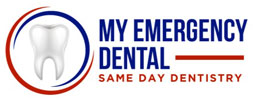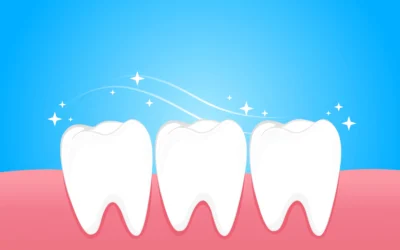The phrase “tooth abscess” doesn’t exactly invite warm and fuzzy feelings. It is certainly not something anyone has ever asked for at Christmas. But, while it just sounds painful, many people do not know exactly what an abscess is, how they happen, or how we treat them. We are here to help.
What is an abscess?
We won’t mince words–an abscess is a pocket of pus formed in the mouth. It can occur in the gums, around the teeth, or even inside them. While nobody likes thinking about pus, it is your body’s response to infection. The body has a miraculous way of healing, and when it senses bacteria or infection, it goes to work. Pus is an army gathering to battle against an invading force of infection.
Still, it isn’t pleasant. And, it is a signal of deeper problems; a signal that deserves attention.
What causes an abscess?
The most common causes of a tooth abscess are tooth decay and damage. Damage to teeth, if left untreated, can leave chips or cracks. Those chips and cracks are invitations to invading bacteria. Ignored cavities can do the same thing, exposing soft spots where bacteria can get inside the tooth or gum line. Where bacteria can go, an infection can follow.
Gum disease, which usually comes from improper or inconsistent brushing, is another common source of abscesses. Abscesses can grow in the gumline, signaling a deeper infection below.
How do you know you have an abscess?
You won’t generally miss a swollen pocket of puss in your mouth. Still, they can come on gradually, and we humans are very good at ignoring things. Pay attention to jaw or tooth pain and any swelling at all.
Not all abscesses, however, are on the surface. They can be deep in the gum tissue or even the jawline. They will cause pain and, occasionally, a fever. If you suddenly have a fever and inexplicable jaw pain, an abscess might be the culprit, and you will want to get it checked out immediately. Likely, you’ve had pain for a while and have just lived with it.
How are abscesses treated?
There are generally four main methods of treatment once an abscess is discovered.
Draining
This will generally be the first step of treatment. It involves getting the pus out of the abscess by draining, which allows the dentist to remove dead tissue and flush out the infected area. It will also bring some relief and clear the way for treating the root of the problem.
Antibiotics
Sometimes the abscess, due to location, cannot be drained. If this is the case, then the dentist will prescribe antibiotics. These will fight infection and relieve pain. Not only will fighting the infection bring relief, but it also clears the path for pain-free dental work. Some dental infections will block anesthesia.
Root Canal
Depending on the intensity of the infection or abscess, a root canal might be the next step for clearing out the problem. If the infection is deep in the pulp of the tooth’s root, then it will need to be cleared out and filled to avoid any future decay or infection. Dental technology has come a long way. Root canals are simple and painless now. There might be soreness after the procedure, but it will feel much better than an abscess!
Extraction
This is the worst-case scenario. If you ignore an abscess for too long then the damage might run too deep. In this case, pulling the tooth could be the best treatment. If possible, replacing the tooth with an implant or at least a bridge will preserve the natural spacing of the teeth and keep the jaw from weakening after pulling the tooth. Extraction is used when the infection has started spreading beyond the tooth and it is advisable to get the tooth out completely so the infection can be stopped more effectively.
Whatever treatment option you discuss with your dentist, it is important to discuss it right away! An abscess means there is an infection and infections can spread quickly and throughout the body. If left untreated, a tooth abscess can even go septic and require hospitalization to fight the infection. If you are in pain and sense swelling or a slight fever, get emergency dental care immediately!
Can Abscesses be Prevented?
Absolutely! And you most likely already know how to do it:
- Brush twice a day
- Floss once a day
- Rinse with mouthwash at least once a day
- Drink plenty of water: Water is great for your body, but it also is a great way to consistently rinse your mouth clean of food particles
- Eat raw fruits and vegetables: Again, these are great for the whole body, but chomping on them also strengthens and cleans your teeth.
- See your dentist regularly: Dentists can spot trouble spots and help you stay on top of them. Regular dental check-ups will go a long way in making sure you never deal with an abscess.
An ounce of prevention is worth a pound of cure, but don’t feel guilty if you suspect you have an abscess. We are blessed to live in an age where you can get treatment quickly and avoid risk and tooth loss. Don’t let embarrassment keep you from getting the help you need. Once you get it taken care of, you can get back in the habit of good dental habits and avoid them in the future.



